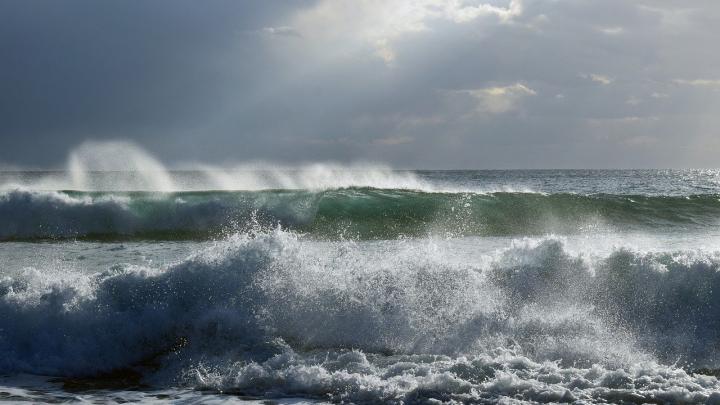
A strong El Niño climate event (the warm phase of the El Niño–Southern Oscillation: ENSO) has been predicted for 2023. El Niño phases are characterised by a band of warm ocean water that develops in the central and east-central equatorial Pacific (including the zone around the Pacific coast of South America). What are the effects of El Niño and how is it modelled and predicted? ICTP climate scientists Fred Kucharski and Adnan Abid, of the Centre's Earth System Physics section, discuss atmospheric modelling and prediction.
What are the effects of El Niño?
Fred Kucharski: El Niño leads to increased temperatures and uncertain weather. An important local impact of El Niño is on the fishery near the coast of South America, which is significantly and negatively affected by the presence of warmer water that contains less nutrients. Then, there are remote impacts. For example in summer, it could bring dry/below normal monsoons over South Asia, which have a wide-spread effect on the global food basket. It could bring below normal rain over the Amazon region, dry maritime continents, drying over the Sahara zone, which extends all the way towards the Arabian peninsula west coast, and dry conditions over the East African region.
In winter, when El Niño peaks, it could bring severe weather to South, Central and West Asia, as well as over East Africa. More precipitation will be expected in the southern half of the US and over the west coastal regions, while in the Southern Hemisphere summer, below normal rainfall over Australia, South Africa, and Brazil are expected. In Europe, impacts are more subtle, but recent studies highlight important impacts in early and late winter.
How does El Niño affect Europe?
FK: It's not always so straightforward with climate modelling, but in this case the further you are away from an event, the less energy there is. El Niño phenomena send out waves, which in principle lose energy. In Europe, the energy is typically less than when it reaches the North American continent, where the impact is very strong. Alaska has warm conditions during El Niño years, and there are strong impacts in the United States, but Europe is far away.
For maybe half a century, people have been looking for teleconnections [relations between climate anomalies over long distances] to Europe. With statistical analysis, you find small changes in the probability of something happening. We actually analysed this recently. People tend to average data over the whole winter, which is reasonable because weather is unpredictable; it is seasonal, and the more you average, the less noise you have. But, if these teleconnections change systematically, and you average over that, you can lose something.
Adnan Abid: El Niño actually peaks from autumn to wintertime in the northern hemisphere. If we treat December, January and February separately, rather than averaging over them as is commonly done, we can better observe short-term effects. If we use only the mean, those signals are mixed together; there’s destructive interference and they cancel, but if we separate the averages for each month, we can see changes in teleconnections. There are inter-basin connections that play a role on the large scale. When we model El Niño plus the Indian Ocean, we may have some kind of impact in November and December, but later in the winter, when El Niño peaks, El Niño seems to dominate compared to the other oceanic basin. So, El Niño has different teleconnections from early to late winter.
How do we predict El Niño events?
FK: Very complex coupled atmosphere-ocean models are used to predict climate variability at seasonal to interannual timescales, and El Niño is one of the most predictable climate features at these timescales. These models cover the whole globe with small 'boxes', parameters such as temperature, humidity and wind are predicted for each, and information is exchanged with neighbouring boxes. However, since our ability to predict climate is limited, a method called the ensemble technique is also used. This means every forecasting centre that issues seasonal predictions (around 10 or more) produces many forecasts (typically 20-50), using small perturbations in the initial state (which cannot be completely known). This is very useful information for making probabilistic estimates. For example, if every single forecast shows that an El Niño is developing in the next months, then we can be very confident about this event. If, on the other hand, only 25 ensemble members out of 50 show an El Niño event, then we can estimate a 50 % chance of it occurring.
“An El Niño event is already developing, and all models and individual ensemble members agree on this.” - Fred Kucharski
Already in January 2023, models began to give a clear indication that an El Niño event was likely to develop. Since El Niño will peak next winter, this event was predicted about one year in advance. There are also observational indicators/predictors. For example the build up of warm water below the surface in the western Pacific is an important factor, and this was also already present in January. This build up of warm water was due to the long-lasting La Niña event that terminated in recent months.
Although El Niño events are predictable further in advance, their severity may be uncertain until a few months beforehand. For example, an El Niño event is already developing, and all models and individual ensemble members agree on this. However, the range of predicted magnitude varies from a very weak to a very severe event (0.5 to nearly 4 ºC heating). Timing is a little easier, as El Niño events typically peak in boreal autumn/winter, so that we may expect the currently growing event to peak next winter.
How do you model ENSO?
FK: Modern climate models are not perfect. They can mistake whether carbon dioxide concentration has doubled or tripled, and don't always show any consensus. This is the case at least in the question of whether El Niño surface temperatures are changing significantly.
“There is a little change in El Niño, but it’s difficult to tell how robust it is.” - Adnan Abid
AA: We looked at the recent available data from Intergovernmental Panel on Climate Change (IPCC) models, and at the various scenarios, such as the one where there could be maximum warming happening, which is referred to as severe. We can take an ensemble of, for example, 28 models, and a little change in variability is noted, but it’s difficult to tell how robust it is.
FK: The majority of models maybe show a weak increase in El Niño surface temperatures, but there are also models that show a decrease. So, it’s hard to be certain. We say that there is a change, but it's not robust amongst the models.
What we can say is that an atmosphere that warms up can hold more water vapor. This is a simple physical rule. When you're in a region where rainfall can be triggered, this typically triggers more of this rainfall. And so, if you take the example of an atmosphere that is more heated, a new El Niño event could have more effect than it would otherwise. However, we’re not sure the El Niño phenomenon is actually changing. In actual fact, that phenomenon happening would have a greater effect because of other factors.
Useful links:

















